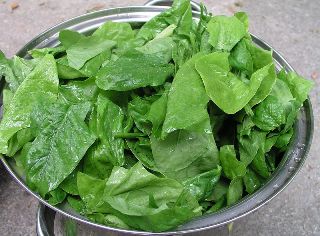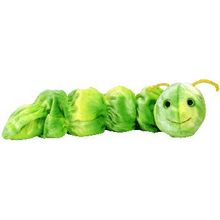 This week the Center for Science in the Public Interest came out with a study of the “Top 10 Riskiest Foods“–meaning the ones that have made people ill the most often. They’re:
This week the Center for Science in the Public Interest came out with a study of the “Top 10 Riskiest Foods“–meaning the ones that have made people ill the most often. They’re:
– Leafy greens
– Eggs
– Tuna
– Oysters
– Potatoes
– Cheese
– Ice Cream
– Tomatoes
– Sprouts
– Berries
The report says, “many of the FDA top 10 are, unfortunately some of the healthy and popular foods consumer in the U.S.”
So much to say, so little space to say it! First, most of the runaway media coverage (the press release, BTW, is brilliant: a top 10 that plays on people’s fears) gave most people the impression that these are foods to avoid. Not so fast, my leafy green resistors!
Here’s what you need to know that’s not in most of the articles:
The Study Didn’t Include Meat
In this clip, the CSPI’s director, Caroline Smith DeWaal,says the list only included foods regulated by the FDA–not the USDA. So, actually the more accurate title of the study (though much less media-ready) should be: The 10 Riskiest Foods That Don’t Include Any Meat Products. If it had included meat, beef might have topped the list: According to the Organic Consumer’s Association, 89 percent of beef has small amounts of E. coli. The New York Times just ran a compelling story about a woman crippled–paralyzed–from E. coli in a hamburger.
.You Can (and Should) Still Eat Most of These Foods
As one blogging M.D., Turi McNamee, said succintly in her post Why You Shouldn’t Be Afraid of Your Salad: “Yes, according to data from the Center for Science in the Public Interest, now it’s leafy greens that will harm you, with 13,568 illnesses (not deaths, illnesses) over the past 20 years. That’s roughly 678 sick people per year. This made CNNMoney.com news. Meanwhile, over 630,000 people die each year from heart disease, with a significant portion of those attributable to diets largely devoid of leafy greens.”
The CSPI Didn’t Even Mean for You to Read This List
“This list is most important actually to the scienstsis and regulators and policy experts that work on food safety. We’re not actually encouraging consumers to make any changes in the eating habit,” said Dewall in that clip cited above. Huh. Then why the widely disseminated press release?
Leafy Greens Are Worth the ‘Risk’
Spinach, for example, is LOADED with folate, magnesium, calcium, vitamin K, C, & A, manganese, iron and more. According to one of my favorite nutrition sites, WHFoods.com, calorie for calorie spinach has more nutrients than any other food.Not to mention how eating more of those foods and less of thers will usually make us feel lighter, glow-ier, more refreshed and alive! Go, Popeye!
Also, note, according to the study, greens mostly get contaminated by the products of farming meat: Leafy greens can become initially contaminated on the farm through contact with wild animals, manure, contaminated water, or poor handling practices during harvest.”
How You Can Eat More Safely
To paraphrase this U.S. News & World Report article on the riskiest foods, in which a CSPI spokesperson gave tips: 1) Don’t change your diet, 2) Don’t eat homemade ice cram with raw eggs (um, ew), 3) skip the raw oysters 4) chop your veggies on a different cutting board than the one you use for raw meat 5) cook your tomatoes (the latter also being a good idea nutritionally–lycopene is more concentrated in cooked toms than raw).
The list’s time of release is no coincidence–food safety is a very real, very pressing problem, in desperate need of reform. And according to that US News article: “Right now legislation is being debated to give the FDA more ability to enforce foof safety To that end, the FDA Food Safety Modernization Act (S. 510), currently under consideration in the Senate, would put stricter standards into place for all food producers, including increased frequency of inspections, and would give the FDA stronger enforcement authority. The House of Representatives passed similar legislation in July.”
So there you go. More than you wanted to know. But I am the Lorax, I speak for the leafy greens!
To check out the risky foods study for yourself, click here.
[Image via: http://commons.wikimedia.org/wiki/File:Spinach_leaves.jpg]
Like what you see? Click here to subscribe and get Fresh Living in your in-box every day!

